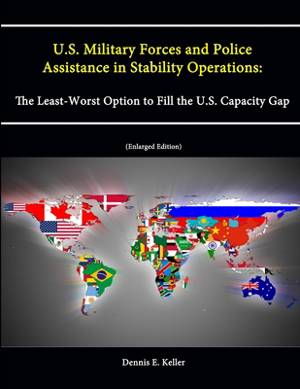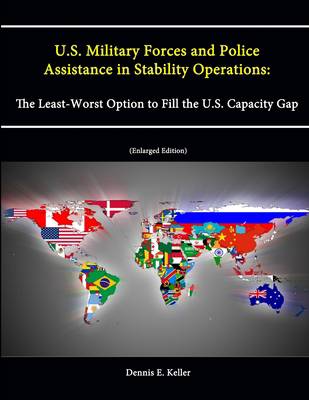
- Afhalen na 1 uur in een winkel met voorraad
- Gratis thuislevering in België vanaf € 30
- Ruim aanbod met 7 miljoen producten
- Afhalen na 1 uur in een winkel met voorraad
- Gratis thuislevering in België vanaf € 30
- Ruim aanbod met 7 miljoen producten
Zoeken
U.S. Military Forces and Police Assistance in Stability Operations
The Least-Worst Option to Fill the U.S. Capacity Gap (Enlarged Edition)
Strategic Studies Institute, U S Army War College, Dennis E Keller
Paperback | Engels
€ 23,45
+ 46 punten
Omschrijving
Establishing an effective local police force is one of the most critical elements of successful counterinsurgency and stability operations, but is a task for which the U.S. government is poorly prepared and lacks capacity. This monograph retraces the recent history of U.S. foreign police training, from the well-coordinated effort by the U.S. Agency for International Development (USAID) from 1961 to 1974, the U.S. congressional prohibition of the use of foreign assistance funds for police training which ended the USAID police training role in 1974, and the subsequent evolution of a patchwork approach to U.S. foreign police training involving up to 30 departments and agencies, a variety of private police contractors, and multiple fund appropriations. Despite this bureaucratic complexity, the key principles for developing effective local police in stability operations remain the same.
Specificaties
Betrokkenen
- Auteur(s):
- Uitgeverij:
Inhoud
- Aantal bladzijden:
- 58
- Taal:
- Engels
Eigenschappen
- Productcode (EAN):
- 9781304322951
- Verschijningsdatum:
- 12/08/2013
- Uitvoering:
- Paperback
- Formaat:
- Trade paperback (VS)
- Afmetingen:
- 216 mm x 279 mm
- Gewicht:
- 158 g

Alleen bij Standaard Boekhandel
+ 46 punten op je klantenkaart van Standaard Boekhandel
Beoordelingen
We publiceren alleen reviews die voldoen aan de voorwaarden voor reviews. Bekijk onze voorwaarden voor reviews.











